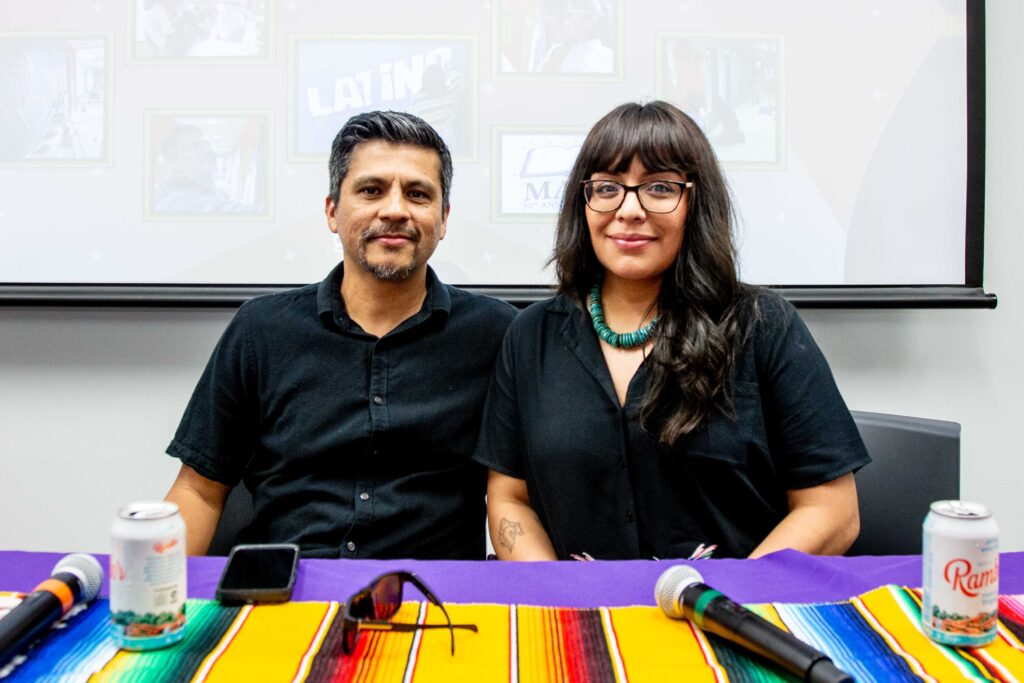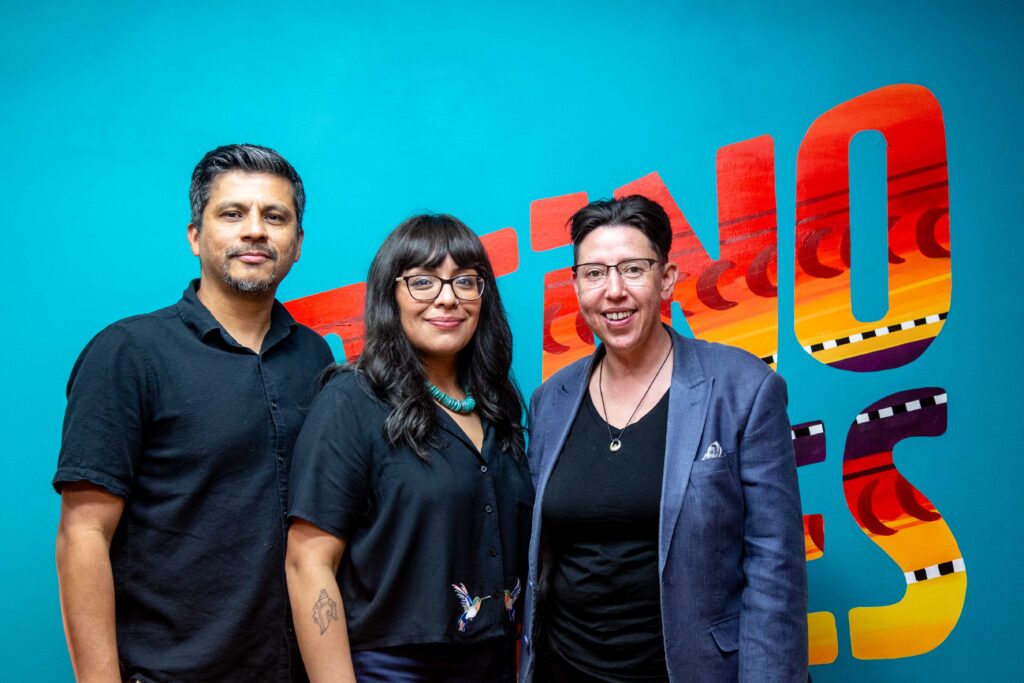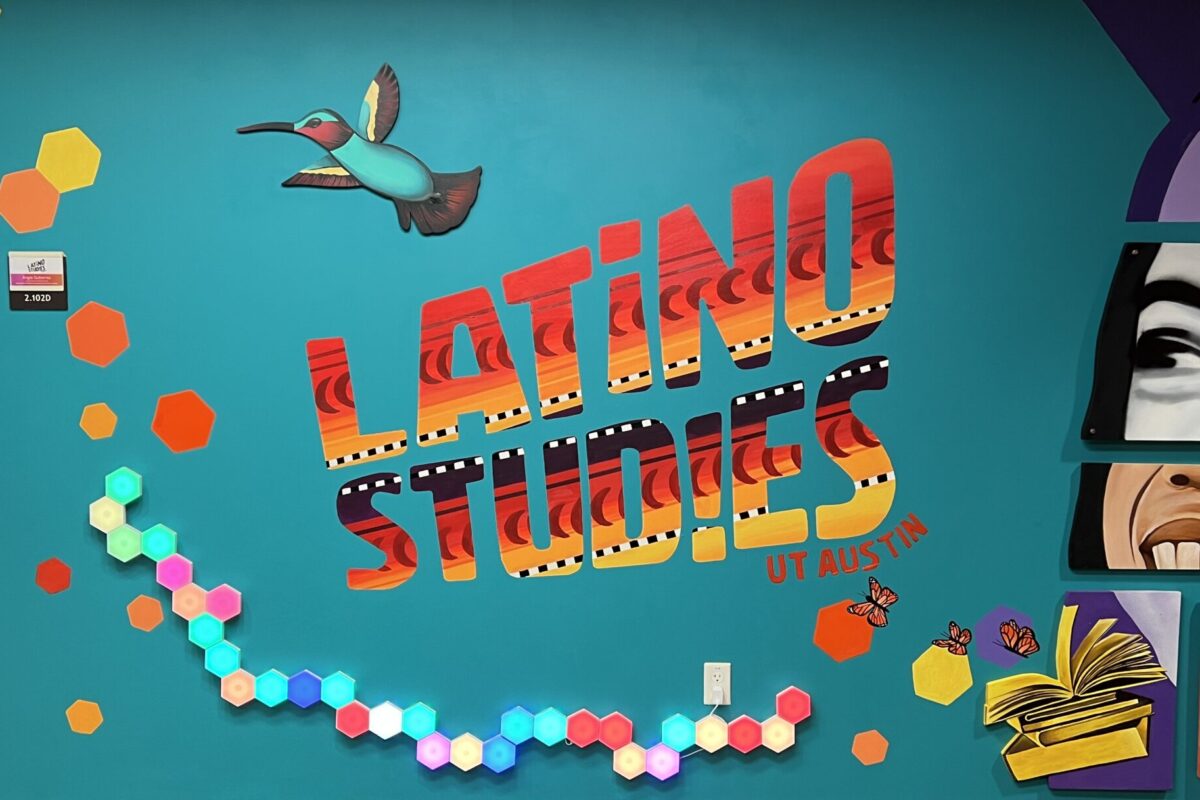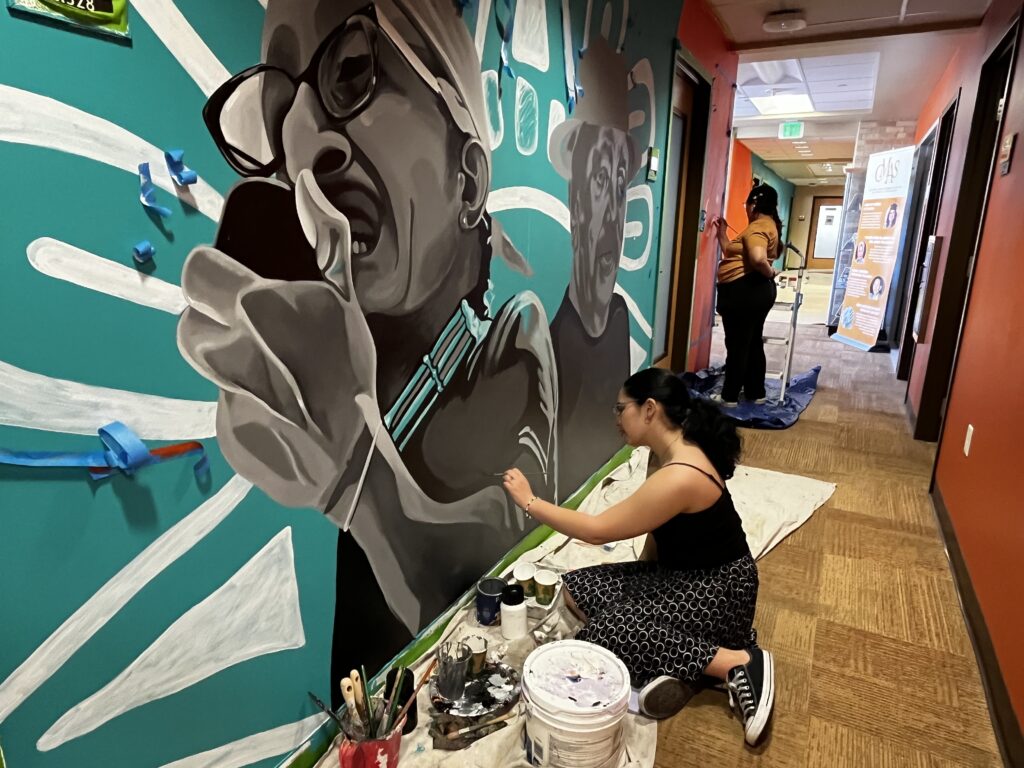When Karma Chávez, the chair of COLA’s Department of Mexican American & Latina/o Studies, or MALS, considered how to celebrate the department’s tenth anniversary, she hit on an unusual idea. Why not invite a community artist to paint a mural in the department’s office?
“I’ve always felt that it’s important for us to figure out ways to bring art into the center of what we do,” Chávez says. “I really wanted something to put an imprint on this important moment of us reaching 10 years. Murals are so significant to us culturally as Latine people.”
So MALS put out an open call for a muralist and artist-in-residence to design and install a mural embodying the slogan “Knowledge is Power.” The plan was to hire a single artist, and as applications were judged blind, the MALS judges who evaluated entries believed they’d done just that. But it was soon revealed that the selected entry was from not one but two artists — husband-and-wife team Ernesto and Cindy Hernández — and the department was thrilled to welcome them as artists-in-residence, plural.
Cindy and Ernesto have been creating murals together for three years, and they describe their collaborative process as dynamic and fluid. A self-taught artist, Cindy’s work is expressive and ambitious, while Ernesto brings considerable experience to their projects — he’s been painting for over 28 years, he says, and has collaborated on more than 20 murals.
“Murals are a very democratic art that permit anyone from any walk of life or background to observe them,” says Ernesto. “Murals are a bridge to other points of view and cultures. They’re free education for the masses.”

Perfect, then, for MALS’s anniversary project. And after talking to collaborating leaders in the Latino Studies family about what they hoped the mural would represent, the Herándezes say they were excited to use the project to “speak on real issues and history, and on the importance of this program to the current situation of underrepresented communities in higher education.”
Their final design reflects the history of MALS as well as the department’s commitment to teaching and research. The mural, which spans two walls in the MALS offices in UT’s Gordon-White Building, depicts a Mayan codice and symbols from Mesoamerican cultures alongside nods to technology, complete with LED lights. There are also representative figures from across the Mexican American and Latina/o community, such as Amara Le Negra, a Dominican-born Black Latina singer, and Jovita Idar, a Mexican American journalist and suffragist.
To bring their design to life, the Hernándezes — along with a small team of MALS students — set up shop in the MALS office over a month-long period beginning in January. Then, in early February, it was time to reveal the final painting. At a MALS 10th anniversary event, the department hosted a mural unveiling and a Q&A with the artists to celebrate their achievement and MALS’ first decade as a department.
“It’s so beautiful; everything about the mural I love,” says Chávez. “We keep the doors open now in the office suite so that no matter where you are you can just turn around and see Latino Studies in such bright colors. And it was so cool seeing students in the hallways, with their paintbrushes, working alongside the artists. I just thought, ‘What a great thing for them to have their mark on this place.’”
The department will continue to celebrate its 10th anniversary over the spring 2025 semester, with the mural open to visitors during normal office hours. Chávez says she and her fellow MALS faculty and staff hope that the mural and the department’s anniversary events will draw attention to all that MALS offers both to UT and to communities beyond the Forty Acres.
“There are very few departments like ours that offer undergraduate and Ph.D. degrees, so our existence is itself significant. In the state of Texas, we’re the only department that offers a Ph.D. in Mexican American & Latina/o Studies,” Chávez says.
“I don’t think it’s too bold to say that we’re on the precipice right now of becoming the best Latino Studies department in the country,” she continues. “I really believe that, just looking at the kind of scholarship that our faculty do and the kind of scholarship our grad students are doing, it’s incredible.”

What does she see the next 10 years holding for MALS?
“I hope we continue to be a place on campus where people can come together for cultural and intellectual community,” she says. “The thing we’ve created together is unusual, and I want to just keep building on those strengths.”

